After writing the crazy popular “12 Mainstream Baby Lies You Likely Believe” a couple weeks ago, several people pointed out some lies I’d forgotten. It’s true, and unfortunate, that lies are passed around so easily when it comes to advice on baby care!
In fact, I’m in the middle of series, so don’t miss any of the posts:
- 12 Mainstream Pregnancy Lies You Likely Believe
- 12 {More} Mainstream Pregnancy Lies You Likely Believe
- 12 Mainstream Baby Lies You Likely Believe
- 12 Mainstream Vaccine Lies You Likely Believe
Today, we’re tackling more baby lies. Because who hasn’t heard some pretty terrible advice in this area?
1. Eczema is normal.
Moms are often told that eczema is just something that happens, and we don’t know why. They may be told it’s genetic. However, this is nothing but lies!
Eczema means allergies. It might be an allergy to a food, or to laundry detergent, or a pet. It’s not possible to know without eliminating some things from the environment, but there’s definitely something causing it — it’s common, but never normal.
Personally, my oldest had terrible eczema as a baby. We did the GAPS diet and focused on gut healing and probiotics and her eczema disappeared around age 2. My second had a little eczema, which disappeared around 8 – 9 months, after we did GAPS. My younger three never had eczema at all. Definitely food allergies and gut health.
2. Spitting up is normal.
While spitting up a small amount after feedings due to overeating, or not burping right away or enough is pretty normal, frequent spitting up or spitting up large quantities is not normal. Especially if it is accompanied by crying and discomfort (including colic).
Excessive spitting up is a sign that there is a food allergy (usually) and most likely poor gut health in mom. An elimination diet and probiotics can often clear this up. If baby is on formula, then it may be necessary to try a different kind — babies can easily be allergic to dairy, corn, and soy, all of which are found in most formulas.
This is a problem because these babies are uncomfortable and unhappy, and may struggle to grow due to losing a good portion of their feedings. They may also not do as well because of poorly developing gut flora, and may have worse reactions when they start solids.
3. There’s no benefit to breastfeeding after (6, 12, etc.) months and you should wean.
Nope! More lies!
There are benefits to breastfeeding that last as long as breastfeeding does — months, or even years. Babies continue to benefit from breastmilk significantly (nutritionally) for at least the first year. The nutritional benefits don’t ever go away, but babies over a year do typically need to eat complementary foods too. However, the immune system benefits become more concentrated after the first year, and the emotional benefits of connecting with mom continue to be important, too.
Basically, there is no age at which you “should” wean. The right time is when you/your baby want to, and not a moment sooner. There’s no arbitrary cut off, no time at which benefits “expire,” and no reason to give into poor advice or social pressure.
4. Cereal is the best first food for baby.
Nope!
The reason that cereal was originally given to babies is because it’s cheap, bland, and supposedly hypoallergenic. However, we now know that baby cereals are highly processed, pretty much devoid of nutrients, and bad for baby’s gut health. Babies don’t produce the enzymes needed to digest grains until their molars are coming in. Grains, including these cereals, can be pretty constipating for many babies, too. They also are very bulky in the stomach, but very low in calories — not something that’s good for a rapidly growing baby.
Instead, healthy first foods include:
- Avocado
- Egg yolk
- Grass-fed beef (meat or liver)
- Butter
- Coconut oil
- Plain yogurt
These foods are high in fat and nutrient-dense, which is what a growing baby needs. They’re also easy to digest. We also offered our babies veggies cooked in homemade chicken stock (until they were soft enough to gummed), bits of raw soft fruits, peeled apple and pear slices (these are good for teething babies, until they can get chunks off).
The best way to feed your baby, when possible, is to simply put bits of food in front of them and let them feed themselves. They will only eat what they want. Spoon feeding is not necessary — although it can be handy for messier foods like yogurt (and other stuff we all eat from a spoon), or when you’re on the go.
5. It’s safe to turn a baby’s car seat forward-facing when they can sit up, at 6 months, if they get too long, etc.
This, for some reason, is one of the biggest fights people have over raising babies.
A number of people have been given bad advice about car seats. This includes that it is safe to turn babies around as soon as they can sit up alone, when they are 6 months old, if they won’t stop screaming in the car, if they outgrow their infant seats, etc. And this is a really big deal, because some studies show between 70 and 90% of car seats are used incorrectly, and car accidents are one of the leading causes of death in kids under 5!
It matters that a car seat is used properly every time you are in the car with your baby. In a split second, it could literally be life and death.
The law in every state is that babies must remain rear-facing in the car until 1 year AND 20 lbs. So, if a baby reaches 20 lbs. at 4 months old, no, you cannot turn him/her around. If a baby is only 16 lbs. at a year old, no, you cannot turn him/her. If your baby gets too long for his/her car seat, or too heavy, you will need to buy a convertible seat instead of an infant seat. These seats will go up to 35 – 45 lbs. rear-facing (depending on the seat) and can accommodate children up to 36″ tall or so.
No, your child’s legs will not break if they are too tall — they’ll fold them up or stick them on the sides of the seats. Rear-facing is 500% safer for kids under 4. It’s now recommended to rear-face until 2 years and 30 lbs. or to the limits of the seat (according to the AAP).
After a child is forward-facing, they should remain harnessed as long as possible — most children can remain harnessed until 5 – 6 years old. Then they should be in a booster until 8 years old, 4’9″ and 80 lbs. Many states have laws that children must be at least 4 years old and 40 lbs. to go in a booster, and 8 years and 80 lbs. to get out of one. Please check your state’s laws. But please don’t go with the minimum requirements, or worse, ignore the laws and graduate your child into the next “step” early. It is simply not safe.
Remember that car seats are not an emotional maturity milestone, and that you’re not “babying” a kid by keeping them rear-facing, harnessed, or in a booster — this is a safety issue that is about their physical maturity and growth. Period.
6. Your baby doesn’t “need” to eat at night after the first couple of months.
Many parents eagerly look forward to the day when their baby will sleep through the night, so that they, too, can sleep again! This has led to the myth that after a certain age, babies do not “need” to eat at night — and parents will sometimes leave their babies to cry, believing that they don’t really need anything.
This is not true! Many babies continue to need to eat at night at least sometimes until they are past a year old. Some don’t wake to eat after the first few months; some wake to eat until 18 months. Plus, many babies who sleep through will start waking again when they are going through a growth spurt, or when they are teething, or during separation anxiety.
The best thing you can do is keep responding to your baby’s needs and be willing to offer snacks or drinks as needed. Our babies, after a year, continued to nurse at night until 18 – 20 months. They also wanted drinks of water, so we started to put sippy cups in their beds so they wouldn’t need to wake us to get a drink.
7. Tylenol, cold medicines, and other OTC remedies are safe for babies.
Sorry, but no.
Cold medicines have not been recommended for children under 6 since 2007 — and that’s an official position from the AAP. More recently, it’s been said that Tylenol isn’t so safe for babies. It’s one of the leading causes of liver failure if parents overdose (which is easy if you mix up children’s and infant’s formulas — infant’s is much more concentrated). Plus, fevers are beneficial and often don’t need treated at all. There are also much safer ways to treat teething and other minor irritations that babies often face.
Medications should be used as rarely as possible, because babies are tiny and growing rapidly and are much more at risk from overuse or overdoses. If you need to use medication, consult a doctor first, and use the smallest effective dose.
This is my favorite teething remedy!
8. Babies need daily baths.
Nope!
It used to be a thing that babies got baths before bed, to clean off the day’s dirt and settle down. And that’s okay, if you want, but babies do not need daily baths. This is especially true for the young ones who aren’t mobile and don’t really get dirty. Sponge baths on bottoms, hair, and chins (to clean the milk dribble out of those fat rolls!) are all that’s needed, really, when babies are small. Older babies may benefit from baths 1 – 2 times per week, or any time they’ve actually been playing and have gotten dirty. But really, dirt doesn’t hurt and less frequent baths are fine.
9. “Back to Sleep” is the safest sleeping position.
Surprisingly — no!
“Back to sleep” started in the early 90s to try to reduce the rate of SIDS. However, sleeping position alone isn’t really causing SIDS. Some theorize that the reason that babies on their stomachs were more likely to die (keep in mind — slightly — as most babies will be fine regardless) is because of all of the harsh fire-retardant chemicals in the mattresses that babies were breathing in. It may have also been from soft bedding and babies who couldn’t turn their heads properly, which is really suffocation, not SIDS.
Back sleeping has led to babies who have flat spots on their heads, which sometimes requires the use of a special helmet to encourage the head to re-shape itself.
With safe bedding and safe sleeping arrangements — chemical-free mattresses, relatively firm surfaces, smooth sheets and light blankets until baby can roll/move well — there’s no evidence that back sleeping specifically is necessary or safer. Many babies will only sleep if they are on their stomachs in the early weeks.
10. Babies should wear shoes as soon as they can walk.
Really? No.
The only reason babies need shoes is to protect their feet when they’re outside. But babies learn to walk by balancing in bare feet, and they should. Newly-walking babies should be barefoot as much as possible, certainly in the house. When you are outside, consider a soft-soled shoes that flexes with their feet instead of hard shoes. It’ll protect them without messing up their newly-acquired balance and skill. And even outside, if you’re in your own yard or someplace that’s relatively safe, let them go barefoot anyway.
11. Well-child visits are absolutely necessary.
Honestly? No.
It’s good to establish a relationship with a doctor you trust, so that should anything go wrong, you have someone who can advise you. But, it’s not necessary to go to every single well-child visit on the schedule. Most parents can weigh and measure their kids at home (although it doesn’t matter exactly how big a kid is, as long as they are growing), and if they notice anything odd, can call and ask about it and schedule an appointment. Most families go because of the vaccine schedule, but more and more families are delaying, spreading out, selectively vaccinating, or not vaccinating — in which case they don’t need to go to all the normal visits.
It’s fine, of course, if you want to go to all the visits, if you’re vaccinating and need to go. But it’s not a necessity.
12. Breast-fed babies need a vitamin D supplement (or iron, or a multivitamin).
This is a newer recommendation, but the truth is — probably not.
Breast milk isn’t the best source for vitamin D, or iron, but — there are other factors. Vitamin D levels are low in breast milk in part because mothers are often deficient. Also, babies are meant to get some sunlight (think 10 min. a day around noon) for vitamin D. Iron levels are low, but iron in breastmilk is well-absorbed.
If anything, in my opinion, mothers should take probiotics and cod liver oil themselves, to pass on to their babies through their milk. Multivitamins are also not necessary and a lot of them are poorly absorbed and may contain artificial colors, flavors, and other additives that aren’t good for babies. Breastfeeding moms can make an herbal infusion from red raspberry leaf and nettle which is extremely nourishing. (An infusion, if you’re not familiar, is like tea, only much stronger. It’s usually a big handful of herbs in a quart of hot water, left to steep for at least a few hours.)
Exclusive breastfeeding is the biologically optimal way to feed, and nothing else should be given prior to 6 months — and that includes supplements. (I do recommend offering cod liver oil to babies directly starting around a year old, or when they are eating significant solids.)
Those are the 12 I thought of and that some others suggested!
Psst! My book, “Natural Remedies for Kids,” is available now!

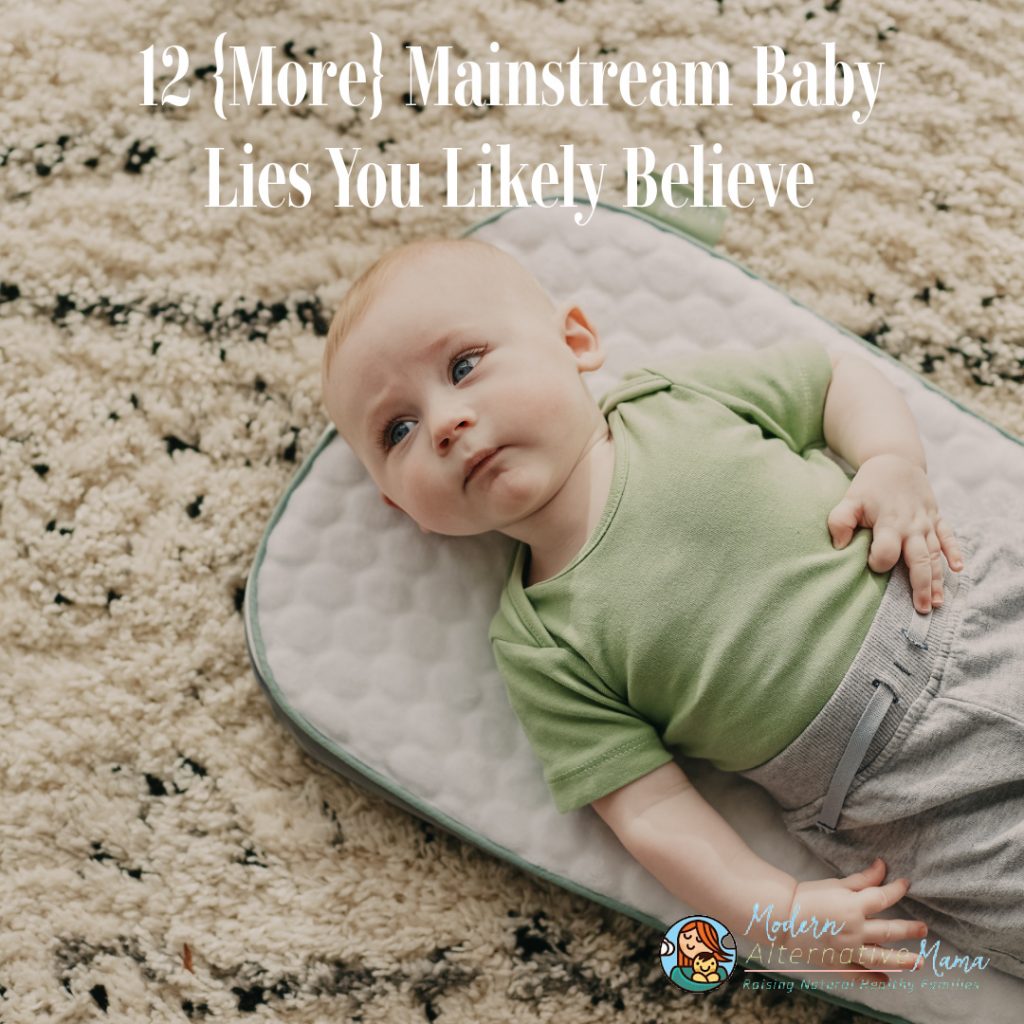
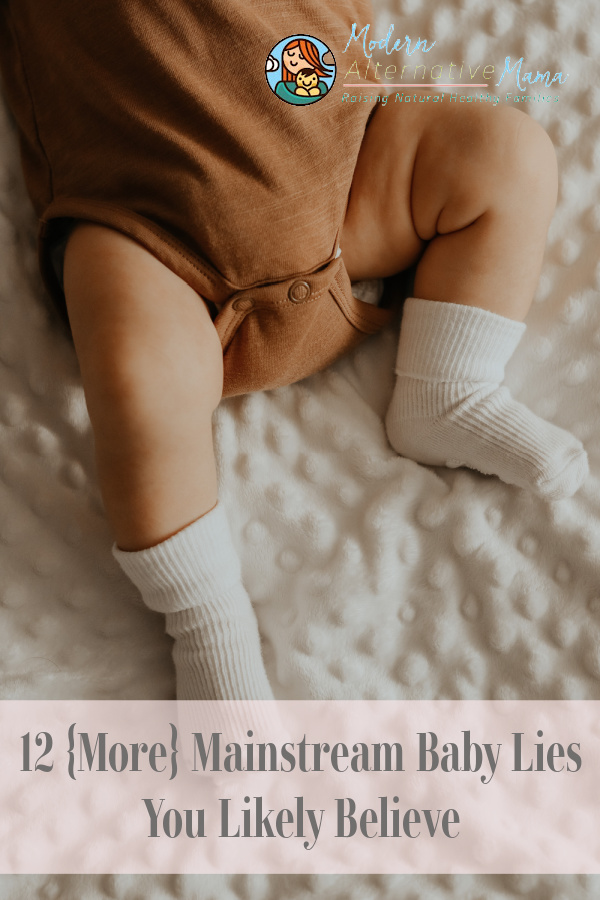
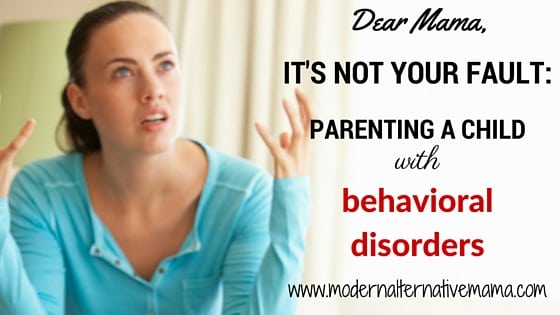
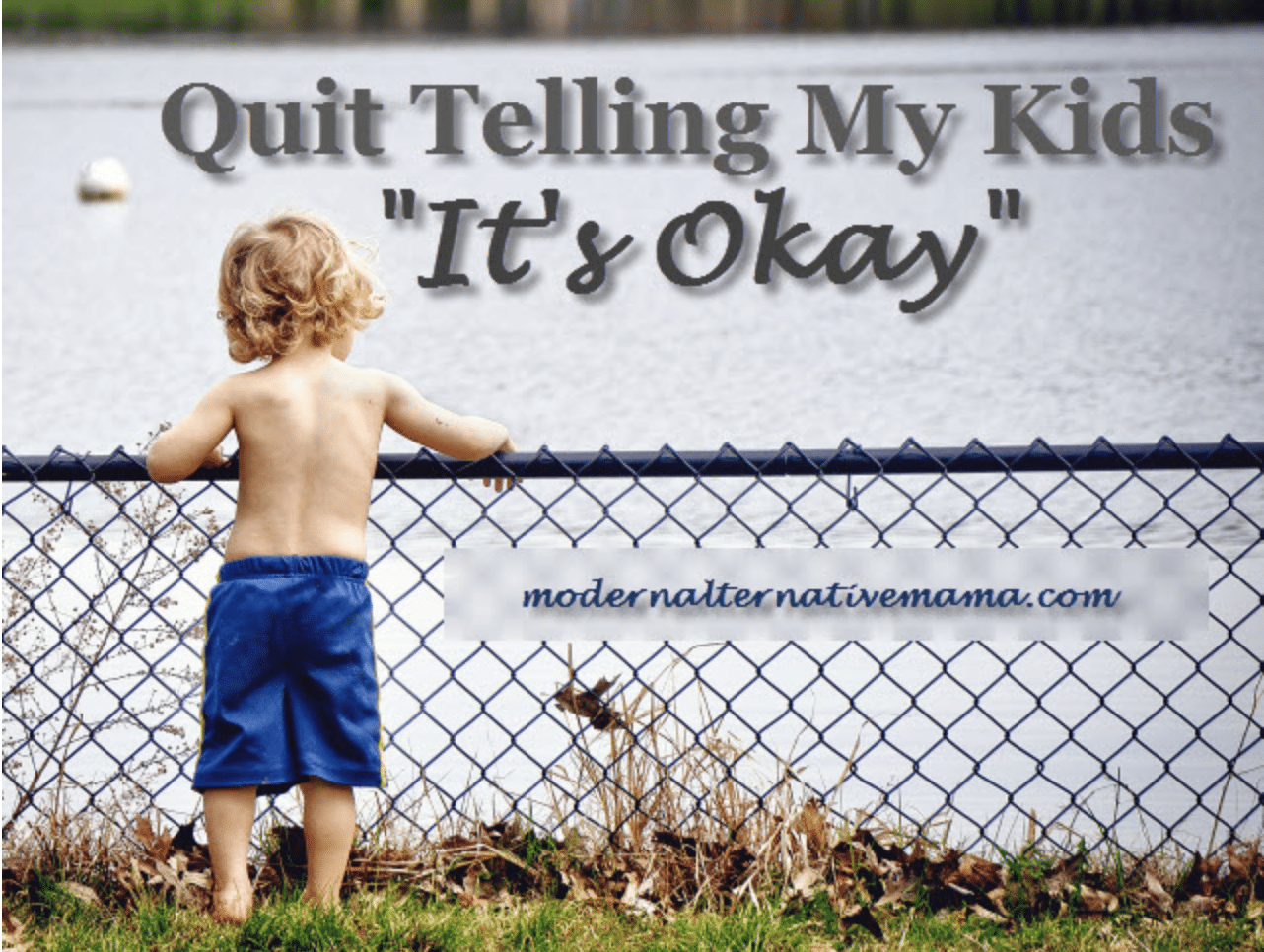
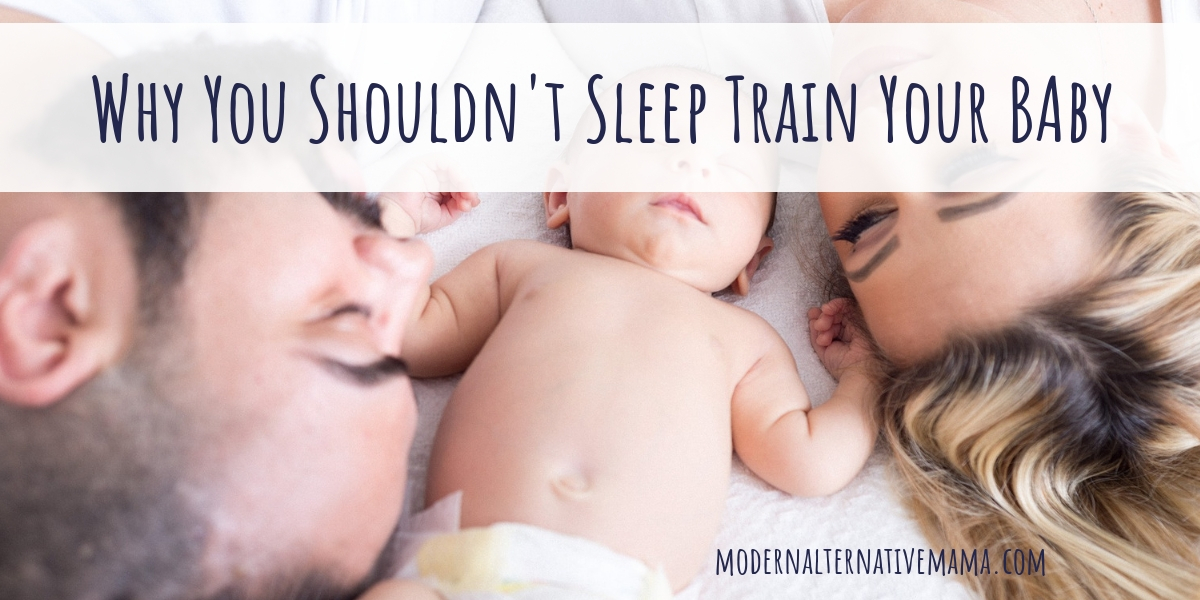
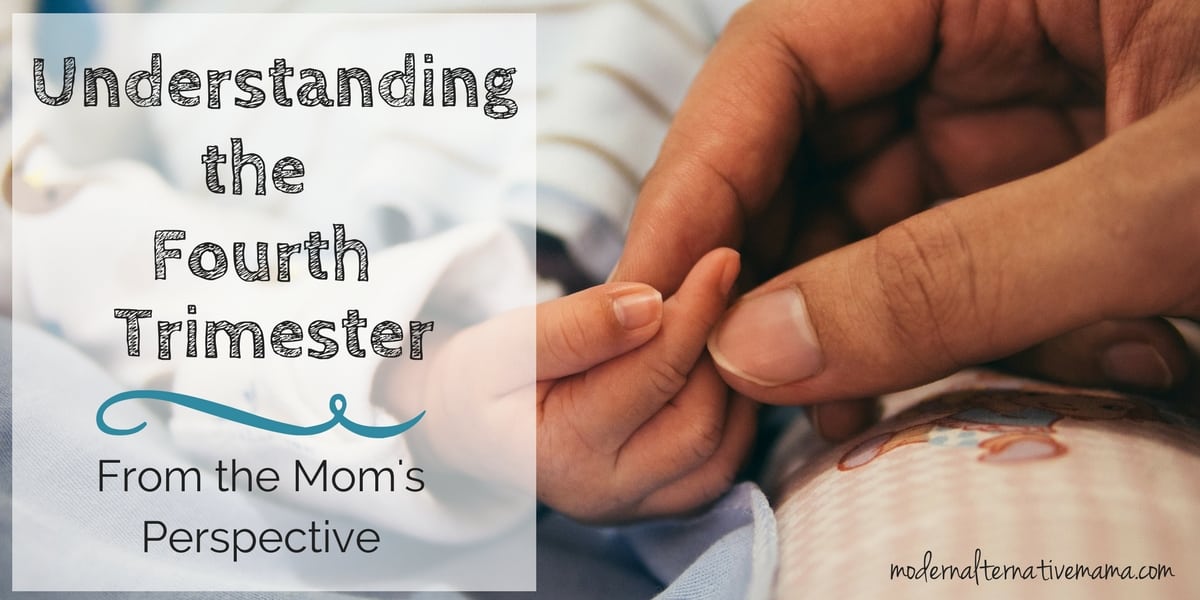

You should check your source/research – Infant’s and Children’s Tylenol are now the same concentration to help prevent dosing accidents.
My guess would be that since many parents do not use Tylenol it would be easy to miss a change made to dosing instructions. Dosing aside, there are many reasons to never give Tylenol to anyone, so you shouldn’t be giving it at all.
This changed in about 2011 I believe. Whether or not a person chooses to use these medicines or natural means, I’m simply pointing out that a fact is presented wrong which could lead to questions on other facts in the article.
So your comment about back sleeping not reducing SIDS is true, but you left out something important. I had always been told that SIDS deaths dropped 50% between the start of the Back-to-sleep campaign and 1999, when rates of back sleeping doubled and was going to come here and say that and give evidence. I went hunting for the source of this information, however, 2001-2009 saw no discernible decrease in SIDS. It is more likely that the decrease seen in the 90’s was due to a reclassification of sleep related deaths like suffocation that were once considered SIDS to their own category. That being said, back sleeping can and does reduce the risk of suffocation in sleep, as does removing any pillows or bumpers or blankets from a crib. So yes, back sleeping doesn’t reduce SIDS, but it does reduce sleep-associated death from things like suffocation. (http://www.nichd.nih.gov/sts/about/SIDS/Pages/progress.aspx)
I didn’t put shoes on my son until he was a year old (he was in a wedding and had to get used to them) he had soft moccasins when we went out or just socks. He is now almost nine and still barefoot 90% of the time, he hates shoes and socks even in the winter. I also didn’t bathe him frequently when he was an infant cleaned what needed to be cleaned but otherwise let him be, he still hates bathes too but he will get over it when he starts dating 🙂
“You have to let other people hold her or she’ll never let you put her down/learn to socialize/etc…”
I had every intention of being the parent who passed my kid around freely and generously, until she was born! I let family hold her (but even with some of them I kept a close eye) but when we were at church or other social situations she was either with me or my husband. I even overheard my husband turn down a few requests to hold her by saying, “Sorry, my wife says no” (I didn’t mind being blamed, better to let people know what kind of mom I am right?) Now she’s 15 months old, prefers walking hand in hand to me holding her and is incredibly social. She’s also very discerning about who she is friendly with, with some people she is in their lap within 30 seconds of meeting them and others she just keeps her distance no matter how hard they try to befriend her. She’s also never jealous when I hold other babies. So now I always encourage new mothers to put their newborns in baby carriers because it discourages people from asking for a turn :p
Eczema is not normal, but eczema definitely doesn’t equal to allergies 100%. It is a genetic disease and in 2014 they finally found the gene responsible for that. I’ve had eczema for my whole life and can surely say it can’t fully be cured by diet if only temporarily. If the gene is there, it will present itself at some point in life and most likely not as an allergic reaction. Have seen people on vegan regime excluding all products they are not only allergic but sensitive too, yet fully covered in severe eczema that wasn’t getting better….
Ah, the rear facing seat thing… Actually safer for EVERYBODY (except the driver, I guess). The military knows this; military transport aircraft always have all the seats facing backwards. If car manufacturers really cared about passenger safety they would build all the passenger seats rear-facing… And would completely solve the “legs too long to rear face” problem. All of my kids are in car seats, and they are all too huge to rear face. I haven’t figured how to turn the seats in my minivan backwards 😉
Great info. Glad to say I didn’t believe these. My youngest was rear facing till 4, which is the age she stopped nursing as well.my second turn ff at a littke over 3 onky because I was making multiple cross country trips by myself with the kids, he is 3 1/2 and still nursing. Both slept on their bellies on top of me, you really want to reduce SIDs co-sleep. This is why Japan does not even gave a word for SIDs. Child led weening=no cereal or baby food for that matter.
How much spitting up qualifies as excessive?
More than a teaspoon or two, multiple times after each feeding, or after every (or most) feedings. Projectile would definitely be excessive!